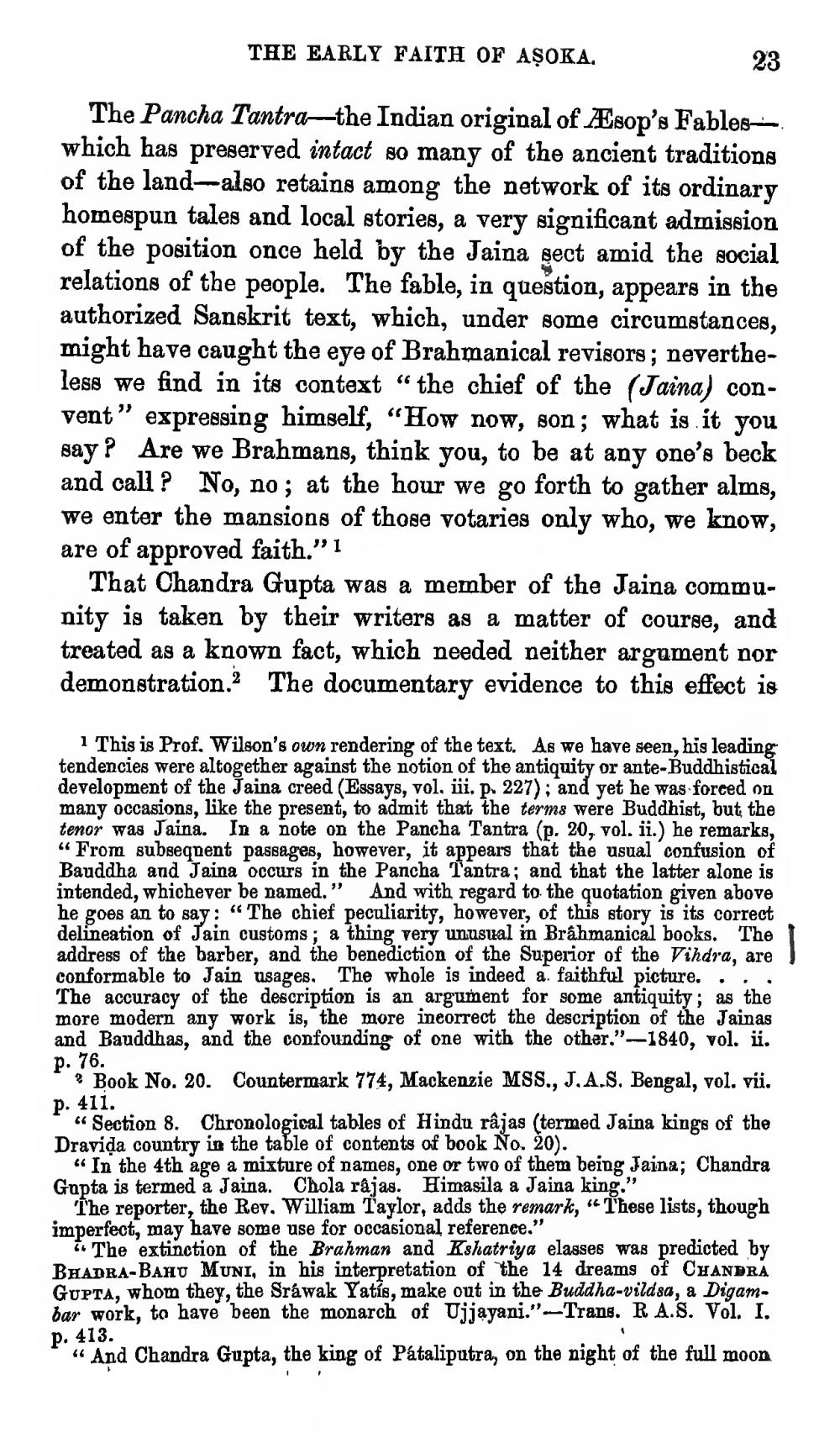________________
THE EARLY FAITH OF AŞOKA.
The Pancha Tantra--the Indian original of Æsop's Fableswhich has preserved intact so many of the ancient traditions of the land also retains among the network of its ordinary homespun tales and local stories, a very significant admission of the position once held by the Jaina sect amid the social relations of the people. The fable, in question, appears in the authorized Sanskrit text, which, under some circumstances, might have caught the eye of Brahmanical revisors; nevertheless we find in its context “ the chief of the (Jaina) convent” expressing himself, "How now, son; what is it you say? Are we Brahmans, think you, to be at any one's beck and call ? No, no; at the hour we go forth to gather alms, we enter the mansions of those votaries only who, we know, are of approved faith."1
That Chandra Gupta was a member of the Jaina community is taken by their writers as a matter of course, and treated as a known fact, which needed neither argument nor demonstration. The documentary evidence to this effect is
1 This is Prof. Wilson's own rendering of the text. As we have seen, his leading tendencies were altogether against the notion of the antiquity or ante-Buddhistical development of the Jaina creed (Essays, vol. iii. p. 227); and yet he was forced on many occasions, like the present, to admit that the terms were Buddhist, but the tenor was Jaina. In a note on the Pancha Tantra (p. 20, vol. ii.) he remarks, “From subsequent passages, however, it appears that the usual confusion of Bauddha and Jaina occurs in the Pancha Tantra; and that the latter alone is intended, whichever be named." And with regard to the quotation given above he goes an to say: “The chief peculiarity, however, of this story is its correct delineation of Jain customs; a thing very unusual in Brahmanical books. The address of the barber, and the benediction of the Superior of the Vihdra, are conformable to Jain usages. The whole is indeed a faithful picture..., The accuracy of the description is an argument for some antiquity; as the more modern any work is, the more incorrect the description of the Jainas and Bauddhas, and the confounding of one with the other."--1840, vol. i. p. 76.
2 Book No. 20. Countermark 774, Mackenzie MSS., J.A.S. Bengal, vol. vii. p. 411.
“Section 8. Chronological tables of Hindu râjas (termed Jaina kings of the Dravida country in the table of contents of book No. 20).
« In the 4th age a mixture of names, one or two of them being Jaina: Chandra Gupta is termed a Jaina. Chola râjas. Himasila a Jaina king."
The reporter, the Rev. William Taylor, adds the remark, “These lists, though imperfect, may have some use for occasional reference."
t. The extinction of the Brahman and Kshatriya elasses was predicted by BHADRA-BAĦU MUNI, in his interpretation of the 14 dreams of CHANDRA GUPTA, whom they, the Sráwak Yatis, make out in the Buddha-vildsa, a Digambar work, to have been the monarch of Ujjayani."- Trans. R A.S. Vol. I. p. 413.
" And Chandra Gupta, the king of Pataliputra, on the night of the full moon




